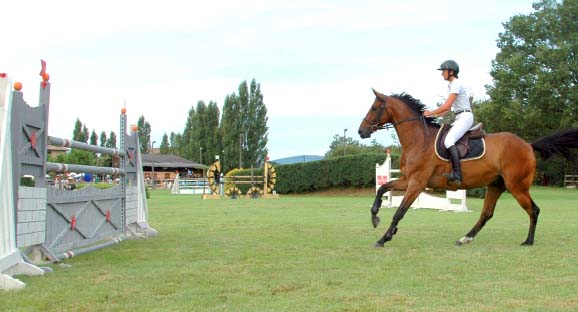You are here
The rider’s correct muscle tone

In order to understand the importance of a correctly positioned back, we need to learn about our muscle system and about the difference between the postural muscles and phasic or movement muscles.
he phasic or movement muscles like biceps, quadriceps, adductors, etc. are the ones used for walking, running, raising an arm or a leg, carrying some weights, using our spurs, etc... These large muscles that are located under our skin are really strong but not resistant as they’re supposed to work only in a discontinued manner.
The postural muscles are on the other way, not very strong but very resistant. They are located deeper in our body, mainly around our joints and along the spine. They are called postural muscles because they support the frame of our body. As previously said, these muscles are useful in sustaining our verticality and supporting our body against gravity.
Our way of life and our natural tendency to do as little effort as possible, push us to under-use our postural muscles. That’s the worse we can do to ourselves.
To convince ourselves, we just need to watch the position of people sitting at the terrace of a café. They slouch on their chairs, the back rounded, seated sideways, legs crossed, head in their hands…All these bad postures are tensing the motion muscles, and shortening the ones of the back.
While riding and especially when approaching fences, we are functioning the same way. The lack of back support and our bad habits push us to use our superficial muscles first: to hold onto the reins, to apply too much pressure with our legs, to pinch the knees into the saddle, to contract our shoulders…meaning to act with strength where we should act with relaxation and looseness. This over-use of movement muscles is done to the detriment to the postural muscles. The rider lets go of his back which make it impossible for him to stay steady and to use his aids correctly to maintain his horse in good conditions on the approach.
That’s different with an advanced rider who is able to maintain the correct muscle tone to control his horse almost exclusively with his back muscles.
On the contrary of the movement or phasic muscles which we instinctively contract, our deep muscles require a voluntary and conscious process. To stay upright requires one’s willing to do it. This is the mind aspect of balance.
Extract of the book "Les secrets de l'abord parfait"





